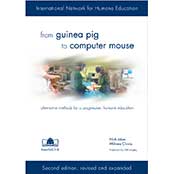alternative methods for a progressive, humane education
Introduction
Part A: Alternative methods and curricular transformation
1. Types of alternative and their pedagogical impact
2. The broader impact of humane education
3. Assessment of alternatives in education, Jonathan Balcombe
4. Curricular design: Choosing and planning a humane approach to life
science education, Lara Marie Rasmussen
5. Conscientious objection: Roles and responsibilities for teachers and
students
6. InterNICHE: Philosophy and practice
Part B: Case studies
1. Virtual versus real laboratories in life-science education: Concepts
and experiences, Hans A. Braun
2. Implementation of computer-based alternatives in biomedical
education, Henk van Wilgenburg
3. Teaching physiology is possible without killing, Mykola Makarchuk
4. Research project practicals for undergraduates in the biological
sciences: Learning problem-solving strategies without animal
experimentation, Garry C. Scroop
5. Client donation program to meet the needs of veterinary medical
education: Alternatives to healthy animal sacrifice, Amarendhra M. Kumar
6. Ethical surgery training for veterinary students, Daniel D. Smeak
7. A pedagogically sound, innovative, and humane plan for veterinary
medical education, Lara Marie Rasmussen, R. Ashley Robinson,
Gary R. Johnston, Shirley D. Johnston
Part C: Alternatives file
1. Anaesthesia & Critical Care
2. Anatomy
3. Biochemistry & Cell Biology
4. Clinical Skills & Surgery
5. Embryology & Developmental Biology
6. Histology
7. Pathology
8. Pharmacology
9. Physiology
10. Miscellaneous
Part D: Further resources
1. Web resources
2. Printed and video resources
3. Alternatives loan systems
4. Organisations
5. Producers
Appendix
InterNICHE Policy
Index
Product index
General index
